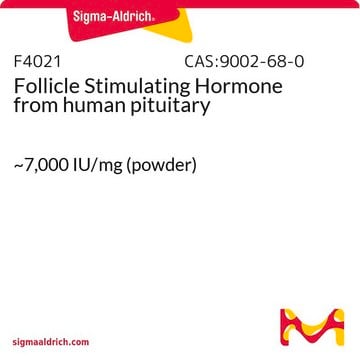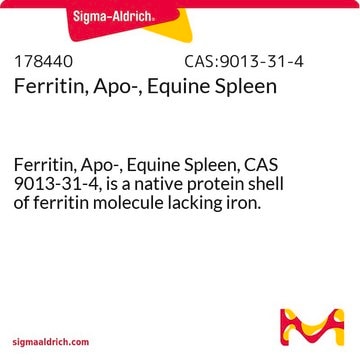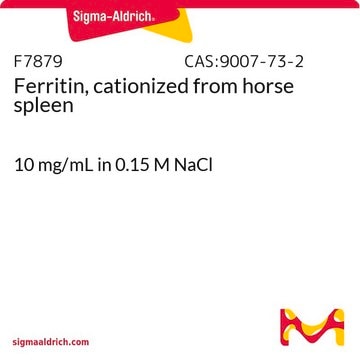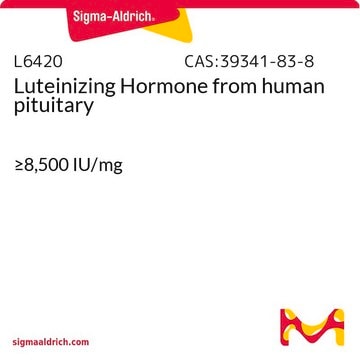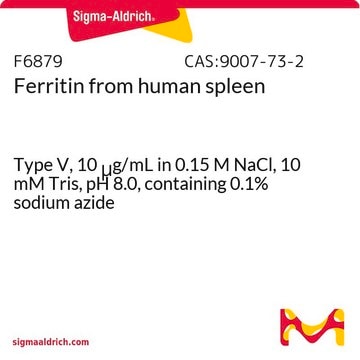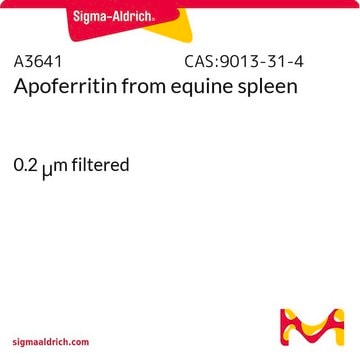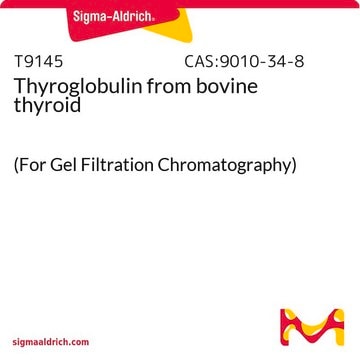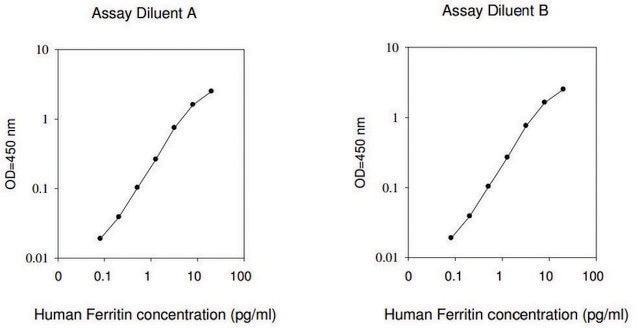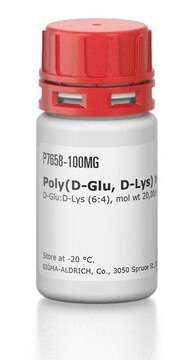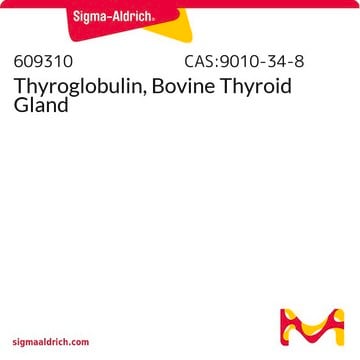F4503
Ferritin from equine spleen
Type I, saline solution
Se connecterpour consulter vos tarifs contractuels et ceux de votre entreprise/organisme
About This Item
Produits recommandés
Stérilité
sterile-filtered
Niveau de qualité
Type
Type I
Forme
saline solution
Poids mol.
H subunit ~21 kDa
L subunit ~19 kDa
Couleur
red to brown
Traces de cations
Cd: ≤1% (as % of ferritin)
Température de stockage
2-8°C
Description générale
A shell of 24 protein subunits (apoferritin) and a core Fe 3+ ions with a peptide MW of 440 kDa. Review of the ferritin-like superfamily of iron-storage proteins, virtually ubiquitous in life on earth.
Application
Ferritin from equine spleen has been used:
- in mycobacterial growth assay
- in size-exclusion chromatography
- in labeling of macrophage cells
- as a reference standard in muon spin spectroscopy
Actions biochimiques/physiologiques
A ubiquitous iron storage protein that plays a key role in iron metabolism. It serves as an intracellular iron reserve (particularly in spleen, liver, intestinal mucosa, and bone marrow) and functions in iron detoxification. Studies have shown that ferritin iron incorporation is mediated by a ferroxidase activity associated with ferritin H subunits and a nucleation center associated with ferritin L subunits. Release of iron from ferritin has an essential role in iron-dependent lipid peroxidation and may contribute to free radical-induced cell damage in vivo. Therefore, by binding iron, ferritin may function as an antioxidant.
Code de la classe de stockage
12 - Non Combustible Liquids
Classe de danger pour l'eau (WGK)
WGK 2
Point d'éclair (°F)
Not applicable
Point d'éclair (°C)
Not applicable
Certificats d'analyse (COA)
Recherchez un Certificats d'analyse (COA) en saisissant le numéro de lot du produit. Les numéros de lot figurent sur l'étiquette du produit après les mots "Lot" ou "Batch".
Déjà en possession de ce produit ?
Retrouvez la documentation relative aux produits que vous avez récemment achetés dans la Bibliothèque de documents.
Les clients ont également consulté
Yves Gossuin et al.
Magnetic resonance in medicine, 48(6), 959-964 (2002-12-05)
Ferritin, the iron-storing protein, speeds up proton transverse magnetic relaxation in aqueous solutions. This T(2) shortening is used in MRI to quantify iron in the brain and liver. Current theoretical models underestimate the relaxation enhancement by ferritin at imaging fields
Adipocyte model of Mycobacterium tuberculosis infection reveals differential iron availability to bacilli in the lipid rich caseous environment
Nandy A, et al.
Infection and Immunity, IAI-00041 (2018)
Sella Kim et al.
Journal of molecular biology, 428(24 Pt B), 5007-5018 (2016-11-03)
Iron and oxygen chemistry is mediated by iron proteins for many biological functions. Carboxylate-bridged diiron enzymes including ferritin have the common mechanism of oxygen activation via peroxodiferric intermediates. However, the route for iron uptake and the structural identification of intermediates
Human-brain ferritin studied by muon spin rotation: a pilot study
Bossoni L, et al.
Journal of Physics. Condensed Matter : An Institute of Physics Journal, 29(41), 415801-415801 (2017)
Italo Moglia et al.
Journal of inorganic biochemistry, 183, 184-190 (2017-12-28)
Ferritin is a globular protein that consists of 24 subunits forming a hollow nanocage structure that naturally stores iron oxyhydroxides. Elimination of iron atoms to obtain the empty protein called apoferritin is the first step to use this organic shell
Notre équipe de scientifiques dispose d'une expérience dans tous les secteurs de la recherche, notamment en sciences de la vie, science des matériaux, synthèse chimique, chromatographie, analyse et dans de nombreux autres domaines..
Contacter notre Service technique
